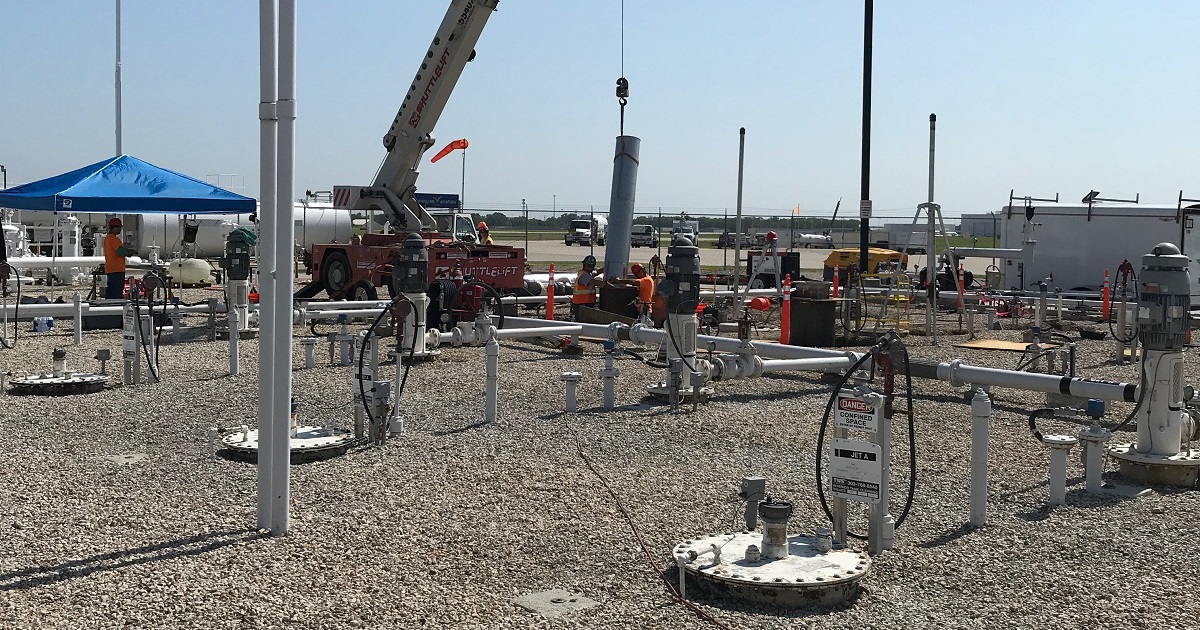Fuel shortages around the U.S. have been in the news recently. Many airports rely on trucks to deliver fuel. At Wichita Eisenhower National Airport, Jet-A fuel (used in jet engines) is supplied to the airport by pipeline. The fuel storage facility located on the airport was originally constructed in 1953-1954 to support the fueling requirements of the new terminal. In the early 1950s, the terminal was isolated from the city which may have been why receiving fuel by a pipeline was the only option. It should be noted that the pipeline does not offer a “tap” supply of fuel; fuel is obtained from the pipeline through contract or order request with the provider. The requested quantity is then pumped into the facility and stored.
Much needed repairs to this facility are currently underway. The ICT Fuel-Farm consists of eight (8) 25,000-gallon steel underground storage tanks (USTS), piping (majority above grade) and associated filters, flow controls, housing, and environmental controls. Since the fuel farm is 67 years old, the infrastructure has been evaluated and modified several times over the last 40-plus years. The most recent evaluation was performed in late 2018; this was a diligence effort focused on internal tank conditions as well as piping and flow control requirements. Additionally, potential upgrades to existing environmental protections were also evaluated. Upon selection of an engineering contractor and upgraded design plan, the improvement project was to begin in 2020. However, the economic turmoil experienced by air travel as a whole during 2020 caused a re-evaluation of the entire improvement project. New plans were thus developed and implemented.
Presently, six (6) tanks are undergoing significant improvements with regards to internal lining, improved inflow/outflow arrangement, and upgrades to stainless steel piping. The project also includes upgrades to volume measurement, filtration, and dispensing. Cost of the project is $6 million and is funded with airport revenue. The work involves rotating out-of-service USTS as well as in-service USTS which presents a challenge. Additional challenges include: lack of an adequate lay-down or material storage, restricted access to work areas due to fixed obstacles, site safety, confined space entry, hot work permits, overhead crane use, and atypical fill time process from the pipeline. Obviously, an important piece of the project is the constant monitoring of available fuel on hand (approximately 88,000 gallons for a 24-hr. period). Completion for this phase of improvements is slated for late 2021.
Given the age of this facility, it is a testament to the original builders for the relatively good shape it is in. More importantly, however, good oversight and maintenance practices over the last 30 years have been key. The Wichita Airport Authority wishes to thank Signature Flight Services (Terry Bottoms), KEAR Civil, Currier and Company, as well as all the sub-contractors presently working on this project.

